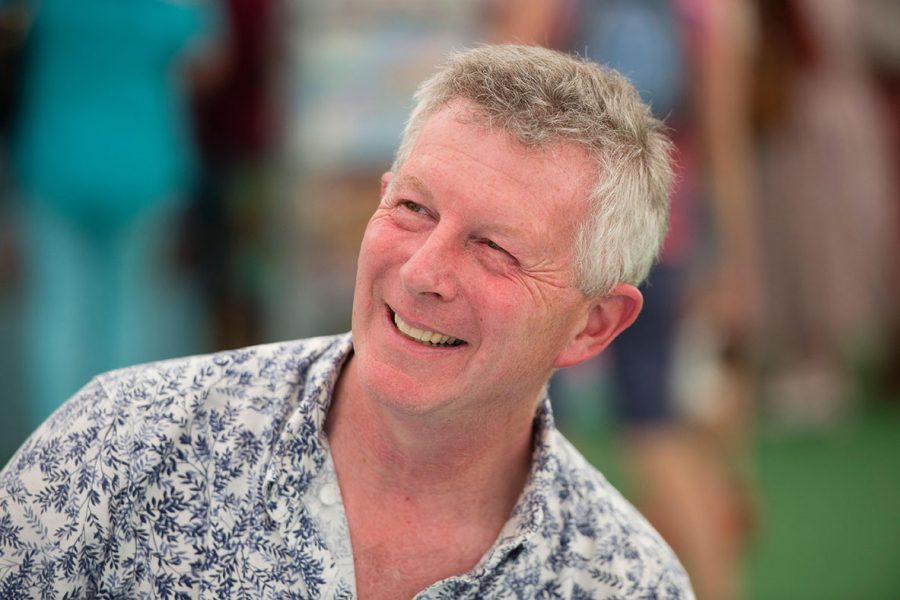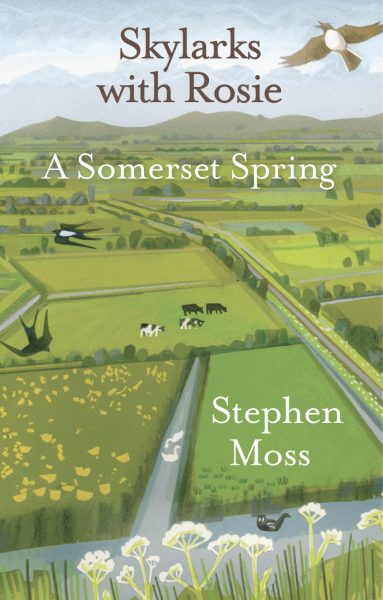An interview with prolific nature writer Stephen Moss on his book ‘Skylarks with Rosie: A Somerset Spring’ published by Saraband.
Reproduced with permission from the Quarterly Newsletter (Issue No. 261, May 2025) of the London Natural History Society.
Stephen Moss is one of Britain’s leading nature writers, broadcasters and wildlife television producers, specialising in birds and British wildlife. He is the author of many books, including ‘biographies’ of the Robin, Wren and Swallow, and teaches MA students at Bath Spa University. He lives with his family in Somerset and is President of the Somerset Wildlife Trust.

JEFNNB STEPHEN MOSS, former Springwatch presenter and nature writer , author of ‘Wonderland – a year of Britain’s Wildlife, day by day’, at the 2017 Hay Festival of Literature and the Arts, Hay on Wye, Wales UK
How did this book come about?
During the first lockdown, in spring 2020, I started keeping a nature diary for the area around my home – Blackford Moor, which we called ‘the loop’ – the three-mile circuit around which I was taking my daily exercise with my dog Rosie, a red-fox labrador. After a week or two I realised I wanted to turn it into a book. I wrote up the diary of events each week, and apart from a light edit, that is what the reader gets now – a true account, without the benefit of hindsight, of those extraordinary times. As I wrote at the start of the book:
‘Our world is cribbed, confined and bound in as never before. Yet amidst all the fear and horror, there is one small but significant silver lining, as we connect with nature on our doorstep’
What do you want to achieve with this book?
Two things: to document that extraordinary and unique spring when we were confined to the area around our homes, and life was put on pause. And also (and this emerged as I was writing the book) to look at the importance of the ultra-local, and its connections with the wider world. I also realised afterwards that I had written a very personal book, with accounts of my family during lockdown, and quite a lot of politics. I have summed up the book as follows:
March 2020: my Somerset garden is awash with birdsong: chiffchaffs, wrens, robins and a new arrival, the blackcap, all competing to sing as the season gathers pace. Overhead, buzzards soar and ravens tumble, apparently as delighted as we are to herald the new season… But this Spring Equinox is unlike any other.
My publisher summed up this book as follows. ‘As the nation stumbles toward a collective lockdown, Stephen begins to observe and record the wildlife in his immediate vicinity, with his fox-red Labrador, Rosie, as his companion on his daily exercise. As old routines fall away, and blue skies are no longer crisscrossed by contrails, they discover the bumblebees, butterflies and birdsong on their patch. This evocative account underlines how an unprecedented crisis has changed the way we relate to the natural world, giving us hope for the future at perhaps the darkest time in our lives. And it puts down a marker for the ‘new normal’: the many species around us, all enjoying, for once, a land less lived in than usual by humankind.
Is there a fun fact or something amazing you learnt during the writing of the book?
Within one mile of my home, in the past 15 years, I have seen 99 species of bird, 24 mammals, 22 butterflies and 14 dragonflies and damselflies. This represents between one-third and one-half of all the regularly occurring British species – in one tiny corner of Somerset, with only a few key habitats!
Were there any memorable moments during the course of writing this book?
Every time I went out during that magical three months of spring, something surprised me. Highlights included the return of the spring migrants – especially the first swallows and swifts, my two favourite birds – but also six species of warbler, which like the swallows and swifts, brought a little touch of Africa to Somerset!
For anyone who wishes to pursue this topic more, are there any online resources you would recommend?
Any good apps on bird identification.

